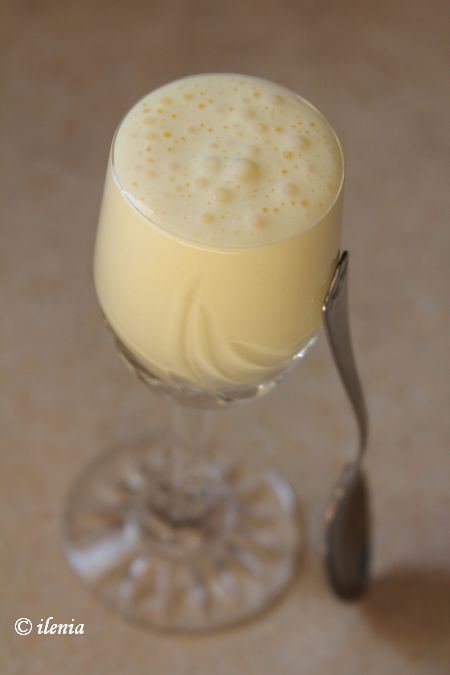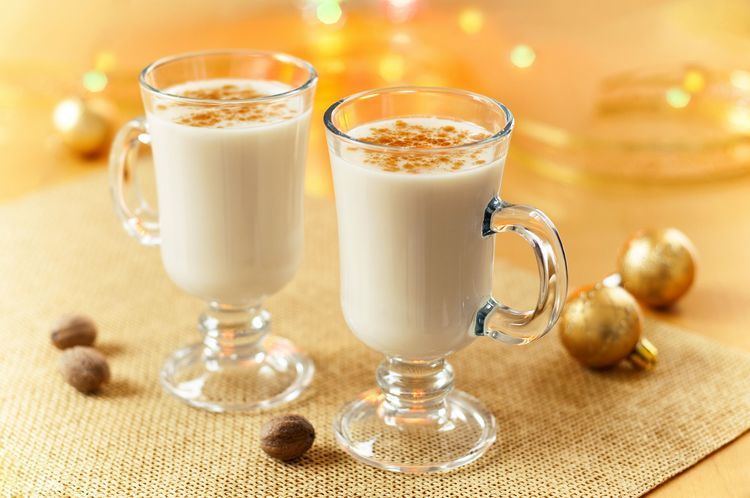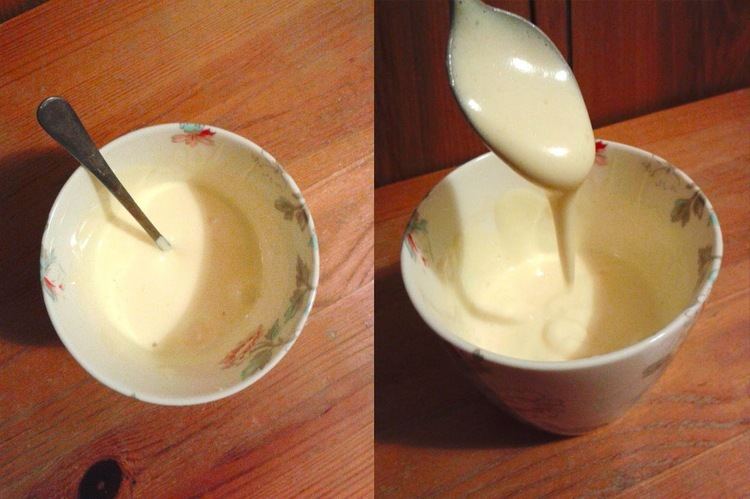 | ||
Alternative names Gogl-mogl, Gogel-mogel, Gogol-mogol, Gogle-mogle, Gogli-mogli Serving temperature Chilled or room temperature Similar | ||
Kogel mogel smak dzieci stwa kotlet tv
Kogel mogel, gogl-mogl, gogel-mogel, gogol-mogol (Russian: Гоголь-моголь), gogli-mogli, or gogle-mogle (Yiddish: גאָגל-מאָגל) is an egg-based homemade Dessert popular in Central and Eastern Europe, as well as in Caucasus. It is made from egg yolks, sugar, and flavourings such as honey, vanilla, cocoa or rum, similar to Eggnog. In its classic form it is served slightly chilled or at room temperature. Served warm or hot, it is considered a home remedy for sore throats. As a home remedy it could be of Russian or Yiddish origin. Variations include milk, honey and soda.
Contents
Domowy przepis na szybki kogel mogel waniliowy i czekoladowy
History and etymology

Gogle Mogle became known by this name by the 17th-century Jewish communities of Central Europe. It may have its roots in the Jewish code of law called the Shulchan Arukh where one is allowed to consume sweet syrup and/or raw egg on Shabbat to make one's voice more pleasant.

Vasmer's dictionary mentions different hypotheses on the origin of the name such as English hug-mug, hugger-mugger, or German Kuddelmuddel.

The dessert was made popular during the communist era when sweets were rare. It is still eaten in Poland and in Polish communities around the world.
Preparation

The dish consists of raw egg yolks and sugar, beaten and ground until they form a creamy texture, with no discernible grains of sugar. In modern kitchens, it is often mixed in a blender until it changes color and becomes thick. A classic single Gogl-Mogl portion is made from two egg yolks and three teaspoons of sugar beat into a cream-like dish. Variations can be made by adding chocolate, vodka, rum, honey, vanilla, lemon juice, raisins, whipped cream, or a number of other ingredients based on one's own taste preferences. A Polish variation includes the addition of orange juice, creating a taste similar to an Orange Julius.[source?]
Uses
Gogel Mogel is often prepared as a transition food for babies moving from a cereal diet to one that includes eggs and other soft foods. It is also a folk medicine used for treating colds or flu, particularly chest colds and laryngitis. Gogle-mogle is ranked highly among other traditional cold remedies such as chicken soup. The baby transition recipe includes raw eggs and sugar which in spite of its widespread use in Russia, is a health risk to young children due to possible contraction of Salmonella.
The traditional usage of Gogle Mogle as a home remedy for treating a sore throat is supported by research done in Israel. The simplest form of preparation as a remedy is with no egg, but only honey added to warm milk. More commonly, a single raw egg is added to a cup of warm milk and mixed with a tablespoon of honey.
